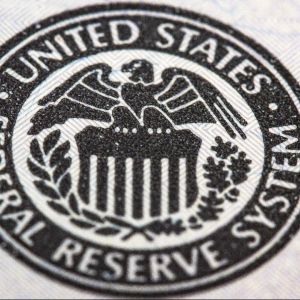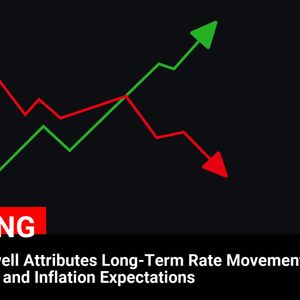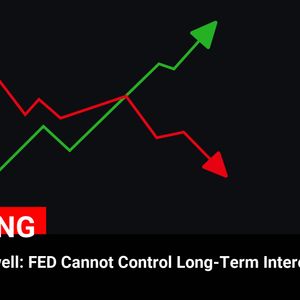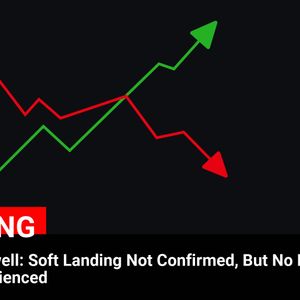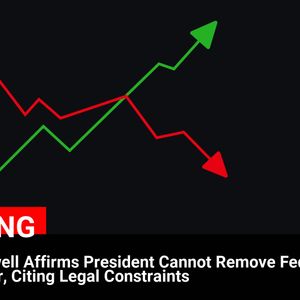Very slowly, but quite surely, the narrative around crypto is changing in the US Federal Reserve after years of skepticism. Republican Fed governors Michelle Bowman and Christopher Waller, who both have a history of voting against crypto, were singing a different tune in separate speeches last Friday. The timing is quite interesting seeing as self-proclaimed ‘crypto president’ Donald Trump is expected to choose one of them to replace Michael Barr as vice chair for supervision, the Fed’s top regulatory position. If that happens, crypto could finally get some breathing room inside the US financial system. Barr had to leave because he knew Trump would fire him, which wasn’t really a secret. Anyway, Bowman and Waller both voted to block Custodia Bank’s application to join the Fed system, and both supported rules that made it nearly impossible for banks to work with crypto companies via the infamous Operation Choke Point 2.0. But people change, and Bowman now thinks : “Financial regulation should promote financial innovation, not stifle it.” She pointed out that using “soft supervision” to quietly push new technologies out of the market is not going to work long-term. Bowman said the Fed’s focus is on balancing safety with innovation so banks can serve more people, especially the unbanked. Waller took a different angle but landed on a similar message. In his speech, he said that stablecoins pegged to the US dollar could strengthen America’s financial dominance, which by the way is something Trump also believes, as is outlined in his disappointing crypto executive order of the ‘Digital Asset Stockpile’ that came in place of the Bitcoin national strategic reserve the president promised during his campaign. The Federal Reserve’s complicated relationship with crypto The Fed wasn’t exactly built with crypto in mind. It came into existence on December 23, 1913, in response to the Panic of 1907—a financial disaster that left banks collapsing like dominoes. Congress created the Fed to stabilize the US economy and prevent future meltdowns. Back then, the dollar was tied to gold, and digital anything was the stuff of science fiction. For most of its early years, the Fed focused on providing emergency loans to banks and managing monetary policy. After World War II, things got more complicated. The global economy was reshaped under the Bretton Woods system, which pegged many countries’ currencies to the US dollar. When Bretton Woods collapsed in the 1970s, the Fed changed its mission to controlling inflation and maximizing employment. Fast forward to today, and the Fed’s priorities are still inflation and jobs, though I guess now it has to deal with crypto too. As the legendary Changpeng ‘CZ’ Zhao once famously said: “BITCOIN IS INEVITABLE!” Now Bitcoin came crashing onto the scene in 2009. Created by the mysterious Satoshi Nakamoto, Bitcoin introduced blockchain technology to the world. At first, it seemed like a niche experiment for tech geeks and libertarians. But even by the mid-2010s, crypto was already impossible to ignore. Ethereum launched in 2015, bringing smart contracts and better tech into the mix and creating a ton of DeFi projects. Regulators everywhere scrambled to figure out what to do with this new asset class. Jerome Powell softens up on Bitcoin And up until Mr. Trump got on that stage on that fateful day in June 2024 and said he was gonna create a crypto army and free the community’s hero Ross Ulbricht, the Fed didn’t care much for Bitcoin. Under Jerome Powell’s leadership, it kept crypto at arm’s length. Powell wasn’t hostile, but he wasn’t exactly a cheerleader either. In 2018, he told the Senate Banking Committee, “We don’t see cryptocurrencies as a threat to our ability to carry out monetary policy. They’re not really money in the classical sense.” Powell’s attitude began to change a little as crypto markets exploded. By 2020, he was pushing for “an appropriate regulatory framework” to manage digital assets, though his team largely ignored him. By late 2024, Powell was speaking more openly about Bitcoin and its place in the financial system. At New York’s Deal Summit in early December 2024, he described Bitcoin as a speculative asset similar to gold. “It functions similarly to gold but exists in a virtual and digital form,” were his exact words. At his press conference after the January 29 Federal Open Market Committee meeting, Powell said, “Banks are perfectly able to serve crypto customers as long as they can understand and service the risks. And of course we’ll support them with that.”




